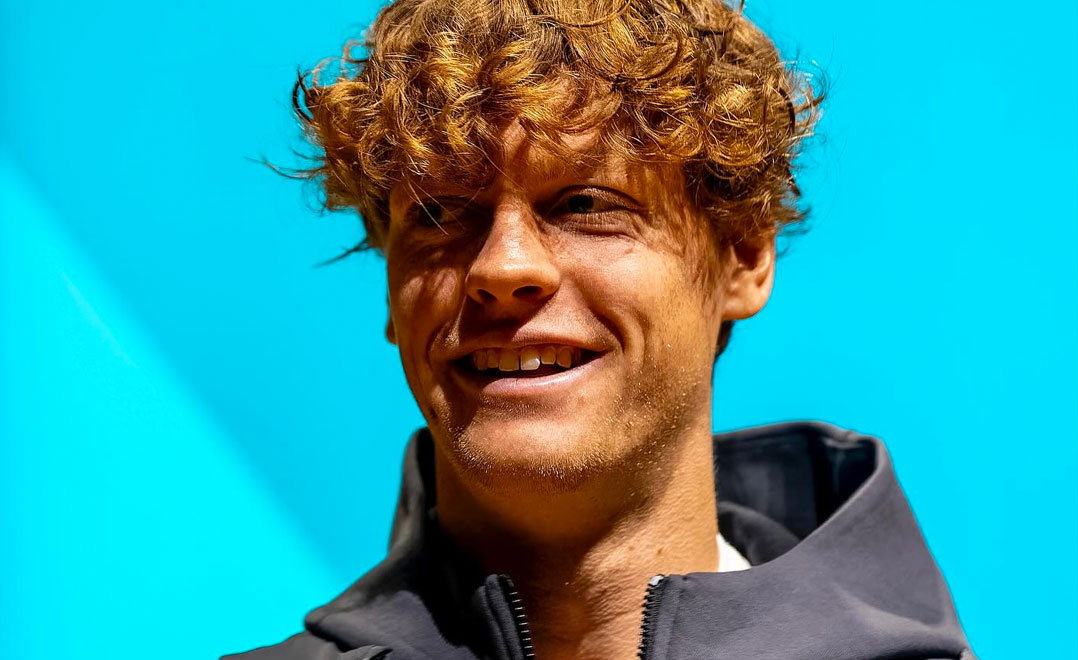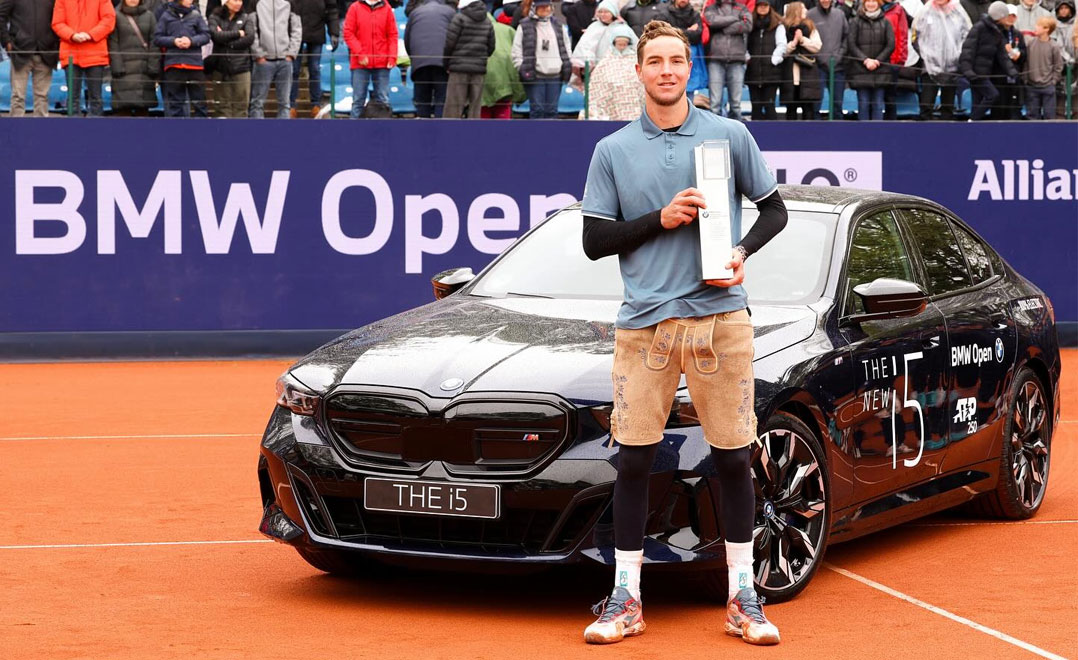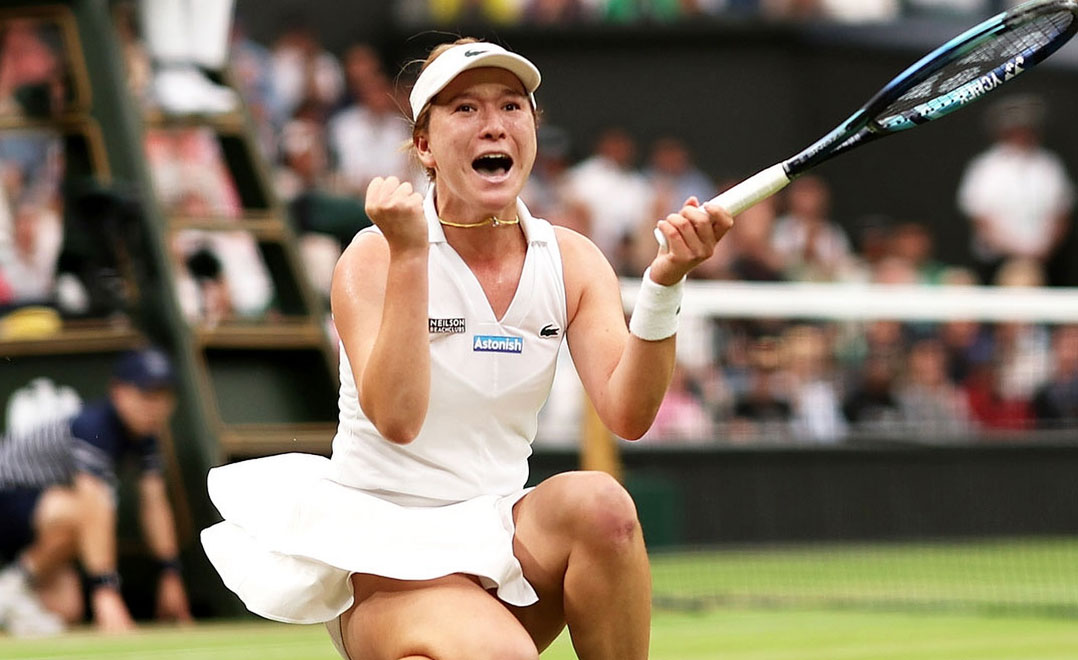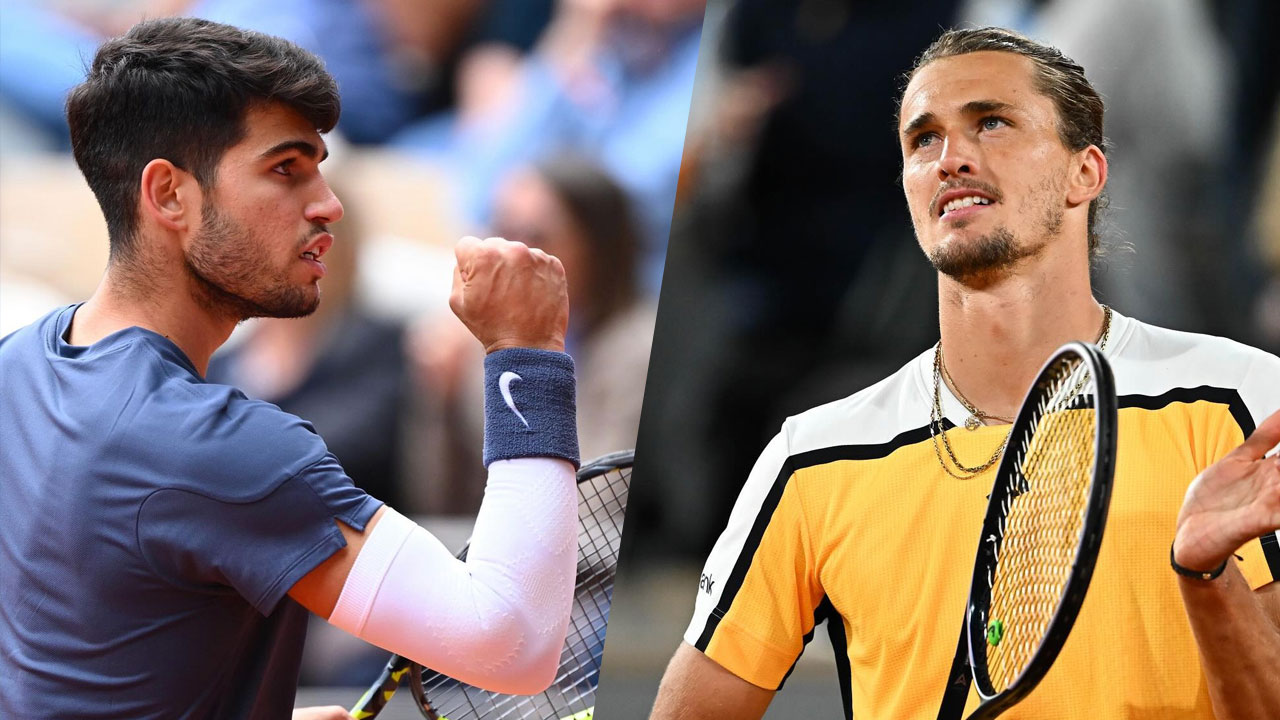Occasionally a player wins a tournament and it feels different. Careful observers can sense that something transpired beyond the routine occurrence of a player lifting a trophy, even a big one.
When a special athlete announces himself, the sea change borders on tangible. It’s obvious in some strange, ethereal way that the previous status quo has been replaced.
An awareness washes over the sport that things will be different going forward because this one person has deemed it so.
The gravitas of the player, the moment in time, the setting, the opponent, the fashion of the victory, the knowledge of the fans and the player’s peers all coalesce into a realization that this particular victory cannot be undone. Or it certainly can’t be ignored.
When Roger took his first Wimbledon, we knew. When Rafa took his first French Open, we knew. When Novak took his first slam…we kinda knew. What we knew at that time was that Roger and Rafa were kings. We knew Novak was good, but he had to prove over and over and over again that he was great. Such was the barometer set by Roger and Rafa (Roger had 12 Slams and Rafa had 3 when Novak claimed his first).
Two years ago, when Carlos Alcaraz started scattering highlight reel shots all over the place, we knew he was special. We didn’t even need to see him win a major to know that. We knew he was going to win a lot of majors before he took his first one, and at age 20 he already has two of them.
Jannik Sinner was good for the last few years. But not great.
No longer. Everything changed when he claimed his first major at the Australian Open.
More specifically, everything culminated…
Australian Open
In tennis, you have to win Grand Slams if you want to be in the proverbial conversation.
After winning one, you can be a part of several different conversations: best of all time, good enough to win a few, good enough to reach double digits, unlucky to be stuck in a specific generation or you’d have more, feel-good winner, one-hit wonder, destined for greatness.
Jannik is in the “destined for greatness” conversation, along with Carlos Alcaraz. No one else in their peer group appears to be in that conversation. For starters, most of them haven’t won a major yet. If and when they do, their conversation will be assessed.
Embed from Getty ImagesJannik Sinner poses with his Australian Open trophy in the Colosseum in Rome.
What makes his win in Melbourne Park stand out is how comprehensive it was. He dominated the field for two weeks. He lost a total of three sets and won forty-five straight service games. Only two men broke his serve at all. He bested Novak Djokovic on his home turf. Novak was going for his eleventh Australian Open!
All this while the hype around him was bigger than ever before. He was even the pre-tournament favorite in many circles. We had our eye on him here, too.
Then, when all hope appeared to be lost in the finals against a brilliant Daniil Medvedev, he found a way to dig out of a two-set hole and stamp his “I have arrived” ticket.
It looked like he would be yet another player to understandably lose his first career Grand Slam final appearance, followed by the inevitable “it was a great two weeks, I learned a lot, I’ll be back” commentary he would have to suffer through—a seeming rite of passage in the top tier of tennis.
Sinner got it done, though. So instead, he’s having private photo shoots in Rome’s famous gladiatorial Colosseum and being feted by Italy’s prime minister Giorgia Meloni.
Mix in his leading Italy to a Davis Cup title, and 22-year-old Sinner is now a bona fide Italian national icon.
A Statement Follow-Up
Three weeks later, Australia looks like just another stop on the journey.
Sinner went out and won the next tournament he played, defeating Top 10er Alex de Minaur in the championship match of the ABN AMRO Open in Rotterdam.
Interesting factoid: it has been twenty-four years since a debut Grand Slam champion won his first subsequent tournament after the Slam itself since Lleyton Hewitt did so in 2001.
Fifteen men failed to achieve that feat in the interim, a list that includes the Big 4.
What does that mean, exactly?
It means he’s naturally suited to the pressure and attention. It doesn’t mean he likes it, but it does mean he isn’t overwhelmed by it.
A player’s life is turned upside down after winning a Slam. Suddenly those quiet training days are rife with media obligations and fan attention. Each tournament brings raised expectations and a new target on your back. You represent a career milestone victory for your competition now, so you face everyone’s highest level each time you play.
For many, it takes a year or more to acclimate.
Sinner was already good to go.
Embed from Getty ImagesSinner wins Rotterdam, the first tournament he played after winning in Melbourne.
In his press conference after winning the Australian Open, he said “I like to dance in the pressure storm. I like it because that’s where most of the time I bring out my best tennis.”
Pause and read that masterful phrase again: “I like to dance in the pressure storm.”
Beautiful, isn’t it?
The best athletes always do. Many incredible talents over the years have buckled in pressure-filled situations, leaving so much unrealized greatness on the table because either they couldn’t meet the moment or their opponent met it better.
To desire the pressure is a pre-requisite to greatness, though. The only way to achieve extraordinary results is to seek pressure, embrace it, and turn it into a strength.
Look no further than Novak Djokovic. Has any professional tennis player leveraged pressure better than Novak? Look what he has done with that mindset—24 majors and counting.
Give him the pressure, and he gives you his best. That relationship with pressure is how athletes achieve special things.
Four Months Changed Everything
Sinner’s breakthrough did not come out of nowhere. Nice guy that he is (and he is truly nice), he was kind enough to telegraph his Australian coming out party.
Sinner fell at the U.S. Open in a five-set quarterfinal to Alexander Zverev—one month later he began his dominant ascent to the top. He has gone 32-2 since, claiming four individual titles and a second-ever Davis Cup victory for Italy. At the time of this writing, he is on an active 15-match win streak.
Jannik Sinner’s Results Since the 2023 U.S. Open
| Tournament | Result | Notable Foes Bested / Notes |
|---|---|---|
| Beijing 500 | Winner | Alcaraz, Medvedev |
| Shanghai 1000 | R16 loss to Shelton | — |
| Vienna 500 | Winner | Shelton, Tiafoe, Rublev, Medvedev |
| Paris 1000 | R16 withdrawal | Scheduling protest |
| Nitto ATP Finals | Finals loss to Djokovic | Tsitsipas, Djokovic, Rune, Medvedev |
| Davis Cup Finals | Winner (Italy) | Djokovic, de Minaur |
| Australian Open | Winner | Khachanov, Rublev, Djokovic, Medvedev |
| Rotterdam 500 | Winner | Monfils, de Minaur |
His ascension was a steady four-month squeeze, dismantling one top-ten opponent after another, time and time again.
Look at those names: Medvedev x4 stands out because—and this is painful for Medvedev—three of the four came in finals. Medvedev is a Grand Slam winner, former world No. 1, and a generational talent in his own right. To beat him in three straight finals plus the ATP Finals group stage is a serious statement.
The one that really rocks the tennis landscape is beating Djokovic three out of four times in such a short span. That is unheard of. That included two wins in less than two weeks, which no one has done to Djokovic since Kyrios in 2017.
These were big events, too. The Nitto ATP Finals, the Davis Cup Finals, and the semis of Australia, where Novak was going for his 11th title and the all-time record of 25 Slams. Dominating the winningest player in history like that doesn’t happen.
Djokovic is hardly slouching, either. He won three majors plus the Nitto ATP Finals this year. He’s in form. Sinner is simply in better form.
Anybody can beat anybody else on any given day. That’s sport. But three out of four matchups is an undeniable pattern. Everyone sees it and feels it, especially the guys in the locker room.
This preposterous four-month run is what turned his Australian Open into a coronation.
He did not catch lightning in a bottle when he won Australia. This was not an obscure two-week peak. And he didn’t get lucky with the draw or catch anyone on a bad day—quite the opposite. Medvedev played lights-out in the Aussie finals. Sinner earned every ounce of that victory.
What happened before our eyes in the last four months is that we watched a player realize his potential.
Sinner went from damn good to great.
From dangerous to deadly.
The future is unknowable, but the safe bet is that he will put up some big career numbers. His nature is too steady to imagine him unlearning everything he’s figured out in the last four months.
He figured out how to win. How to wring more out of his game without sacrificing its foundational strengths. He found parts of his game that had been lurking, waiting to be coaxed out. Credit Darren Cahill and everyone around him for excavating the deeper attributes.
How much more is in there? Phew, there could be a whole lot. We don’t know. If he can extract this much additional talent in a few months, how much can he extract in the next few years? How much can he extract with ten more pounds of muscle? He could become scary dominant by the time he turns 25.
The Road Ahead
When someone breaks through with a big win like this, they usually return to earth. Don’t expect that to happen with Sinner. He has enough years on tour and peripheral experience of life at the top that he should adapt well to operations as a Grand Slam champion.
His Rotterdam performance moves him up one spot to a career-high No. 3 in the world rankings. Once again, at Medvedev’s expense.
Looking at the ranking points that Alcaraz has to defend in the months ahead, it seems likely that Sinner will take over No. 2 before long. How far away is No. 1? It isn’t out of the realm of possibility this year. It’s almost a certainty in due time, though.
Expectations should be lowered during the clay court season. His game isn’t naturally suited to the surface, although he does have one title on clay, a 2022 win in Croatia where he defeated Alcaraz in the finals. So there’s precedent that he can win on clay, but don’t expect it to be the norm. Like many before him, figuring out how to win on dirt will be one of his biggest career challenges.
The titles will come fast and furious for Sinner over the next decade. Expect an average of 3-4 titles each year, and he’ll be in the hunt for every major he enters.
How will the Big 4’s benchmarks motivate him, if at all? So far, he doesn’t seem like much of a numbers guy, nor does he appear to be driven to one-up anyone else the way Novak has so openly pursued every record in sight.
A lot can change when rewriting record books starts to seem feasible, though.
If Sinner gets a few more majors under his Italian leather belt, he might start brushing up on his history.



